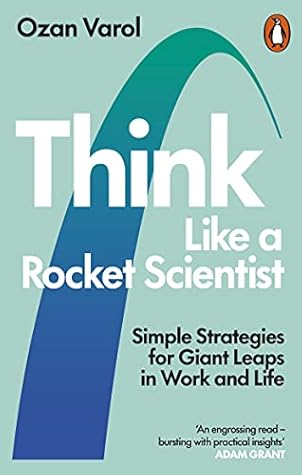More on this book
Community
Kindle Notes & Highlights
we didn’t even know “how to do [Earth] orbit determination, much less project orbits to the Moon.”4
For a politician, Kennedy was surprisingly candid about the challenges ahead. The giant rocket to take the astronauts to the Moon, he explained, would be “made of new metal alloys, some of which have not yet been invented, capable of standing heat and stresses several times more than have ever been experienced, fitted together with a precision better than the finest watch” and sent “on an untried mission, to an unknown celestial body.”7
We jumped into the cosmic void and hoped we would grow wings on the way up.
Miraculously, the wings sprouted. In 1969, less than seven years after Kennedy’s pledge, Neil Armstrong took his giant leap for mankind. A child who was six
years old when the Wright brothers took their first powered flight—lasting all of twelve seconds and moving 120 feet—would have been seventy-two when flight became powerful enough to put a ...
This highlight has been truncated due to consecutive passage length restrictions.
This giant leap—taken within a human lifespan—is often hailed as the triumph of technology. But it’s not. Rather, it’s the great triumph of a certain thought process rocket scientists used to turn the impossible into the possible. It’s the same thought process that has allowed these scientists to score dozens of interplanetary holes in one with supersonic spacecraft, sending them millions of miles through outer space and landing them on a precise spot. It’s the same thought process that brings humanit...
This highlight has been truncated due to consecutive passage length restrictions.
make affordable commercial space tourism...
This highlight has been truncated due to consecutive passage length restrictions.
To think like a rocket scientist is to look at the world through a different lens. Rocket scientists imagine the unimaginable and solve the unsolvable. They transform failures in...
This highlight has been truncated due to consecutive passage length restrictions.
view mishaps as solvable puzzles rather than insurmountable roadblocks. They’re moved not by blind conviction but by self-doubt; their goal is not short-term results but long-term breakthroughs. They know that the rules aren’t set in s...
This highlight has been truncated due to consecutive passage length restrictions.
“There are a thousand things that can happen when you go to light a rocket engine,” explains SpaceX propulsion chief Tom Mueller, “and only one of them is good.”8
Lurking behind the elusive subject of rocket science are life-changing insights on creativity and critical thinking that anyone can acquire without a PhD in astrophysics.
Science, as Carl Sagan
put it, is “a way of thinking much more than it is a bod...
This highlight has been truncated due to consecutive passage length restrictions.
You won’t be a rocket scientist by the end of this book. But you’ll know ...
This highlight has been truncated due to consecutive passage length restrictions.


